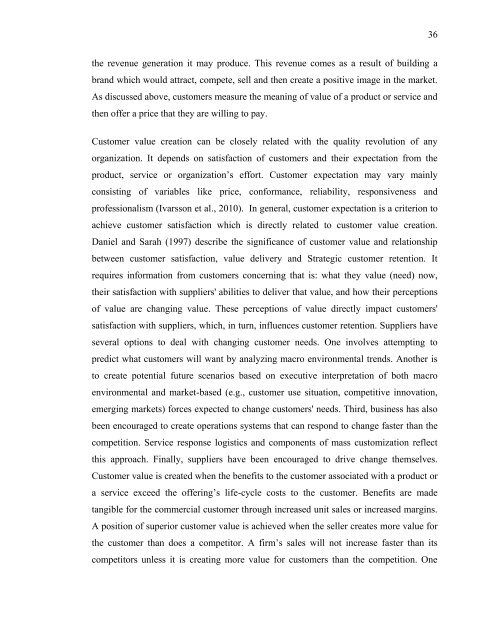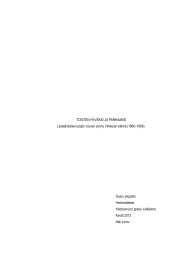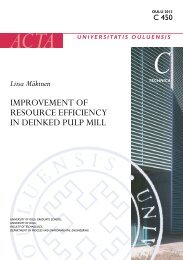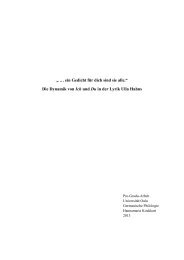Hassan Sherwani ROLE OF SALES AND MARKETING IN ... - Oulu
Hassan Sherwani ROLE OF SALES AND MARKETING IN ... - Oulu
Hassan Sherwani ROLE OF SALES AND MARKETING IN ... - Oulu
Create successful ePaper yourself
Turn your PDF publications into a flip-book with our unique Google optimized e-Paper software.
36<br />
the revenue generation it may produce. This revenue comes as a result of building a<br />
brand which would attract, compete, sell and then create a positive image in the market.<br />
As discussed above, customers measure the meaning of value of a product or service and<br />
then offer a price that they are willing to pay.<br />
Customer value creation can be closely related with the quality revolution of any<br />
organization. It depends on satisfaction of customers and their expectation from the<br />
product, service or organization’s effort. Customer expectation may vary mainly<br />
consisting of variables like price, conformance, reliability, responsiveness and<br />
professionalism (Ivarsson et al., 2010). In general, customer expectation is a criterion to<br />
achieve customer satisfaction which is directly related to customer value creation.<br />
Daniel and Sarah (1997) describe the significance of customer value and relationship<br />
between customer satisfaction, value delivery and Strategic customer retention. It<br />
requires information from customers concerning that is: what they value (need) now,<br />
their satisfaction with suppliers' abilities to deliver that value, and how their perceptions<br />
of value are changing value. These perceptions of value directly impact customers'<br />
satisfaction with suppliers, which, in turn, influences customer retention. Suppliers have<br />
several options to deal with changing customer needs. One involves attempting to<br />
predict what customers will want by analyzing macro environmental trends. Another is<br />
to create potential future scenarios based on executive interpretation of both macro<br />
environmental and market-based (e.g., customer use situation, competitive innovation,<br />
emerging markets) forces expected to change customers' needs. Third, business has also<br />
been encouraged to create operations systems that can respond to change faster than the<br />
competition. Service response logistics and components of mass customization reflect<br />
this approach. Finally, suppliers have been encouraged to drive change themselves.<br />
Customer value is created when the benefits to the customer associated with a product or<br />
a service exceed the offering’s life-cycle costs to the customer. Benefits are made<br />
tangible for the commercial customer through increased unit sales or increased margins.<br />
A position of superior customer value is achieved when the seller creates more value for<br />
the customer than does a competitor. A firm’s sales will not increase faster than its<br />
competitors unless it is creating more value for customers than the competition. One
















